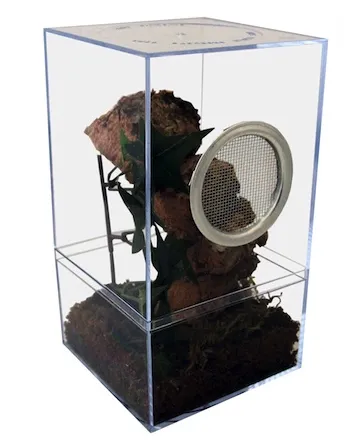Gooty Sapphire Tarantula Overview
The Gooty Sapphire Tarantula (Poecilotheria metallica) is a striking and captivating spider, revered for its vibrant blue and metallic coloration. Originating from the Indian state of Andhra Pradesh, this arboreal tarantula is a popular choice for experienced arachnid enthusiasts. This comprehensive care sheet will guide you through every aspect of caring for your Gooty Sapphire Tarantula, ensuring its health, happiness, and longevity. From habitat setup to feeding and handling, we’ll cover all the essentials, providing you with the knowledge you need to provide the best possible environment for your pet. Keeping these amazing creatures require commitment and understanding, but the reward of observing their unique behavior and beauty is unparalleled. This care sheet aims to arm you with the information needed to ensure your tarantula thrives.
Appearance and Characteristics
The Gooty Sapphire Tarantula is renowned for its stunning appearance. Adults display a deep, metallic blue coloration on their carapace (the top part of their cephalothorax) and legs, contrasted by a yellow or golden abdomen. Their leg span can reach up to 7-8 inches, making them a medium-sized tarantula. The intricate patterns and vibrant hues make this species a true gem in the tarantula world. Juvenile Gooty Sapphires may have a different color pattern than adults, often with more muted tones, gradually developing their striking coloration as they mature through molting cycles. These spiders also possess potent venom, a key defensive mechanism. The overall aesthetic appeal of this species is one of the primary reasons for its popularity among collectors.
Natural Habitat
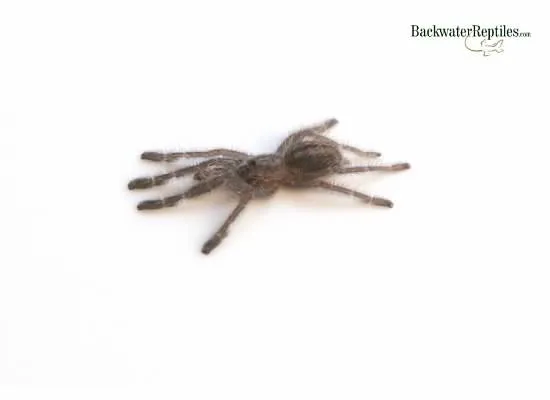
Understanding the natural habitat of the Gooty Sapphire Tarantula is crucial for replicating their ideal living conditions in captivity. In the wild, they are native to a small region in India, specifically the scrub forests of Andhra Pradesh. These tarantulas are arboreal, meaning they live in trees, and they prefer to make their homes in the hollows of trees or under loose bark. The climate in their native habitat is tropical, with high humidity and temperatures. They are adapted to living in a humid environment where they can ambush prey and avoid predators. They thrive in locations with ample hiding spots, protection from the elements, and proximity to their food sources. This habitat knowledge helps ensure that the terrarium conditions properly mimic their natural environment.
Behavioral Traits
Gooty Sapphire Tarantulas are known to be skittish and fast-moving, making them more suited for experienced keepers. They are not typically aggressive, but they will defend themselves if they feel threatened. They are nocturnal hunters, primarily active at night, and will often retreat to their hide during the day. The Gooty Sapphire Tarantula is a web-spinning species, creating intricate webs within their enclosures. They can be defensive and display a threat pose, which involves raising their front legs and showing their fangs if they feel threatened. It is important to provide them with a secure and enriched environment to minimize stress and allow them to exhibit their natural behaviors. Proper handling is imperative due to their skittish and quick movements.
Choosing Your Gooty Sapphire Tarantula
Where to Buy
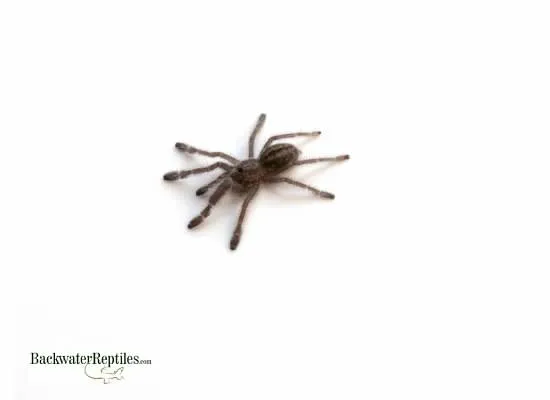
When acquiring a Gooty Sapphire Tarantula, it’s vital to choose a reputable source. Consider purchasing from specialized breeders or reputable pet stores that specialize in arachnids. This ensures you receive a healthy specimen and provides access to expert advice and support. Avoid buying from unreliable sources or pet stores that do not prioritize the welfare of their animals. Check reviews and research the seller’s reputation before making a purchase. Verify the tarantula’s origin and health status before buying. Inspect the spider for any signs of illness or injury. Look for active and alert behavior, and a well-fed appearance. Purchasing from a reputable source reduces the likelihood of receiving a sick or poorly cared-for tarantula. Many reputable breeders offer guarantees and post-purchase support, which can be invaluable, especially for beginners.
Health and Condition
Before purchasing, assess the tarantula’s overall health. Look for a plump abdomen, which indicates the spider is well-fed and hydrated. Avoid specimens with a shriveled abdomen. Check for any missing legs or other visible injuries. Ensure the tarantula is active and responsive to its environment. The spider should not be lethargic. Observe its feeding behavior, as a healthy tarantula will readily accept food. Research the tarantula’s molting history; a recent molt can be a sign of good health. Question the seller about the tarantula’s origin and any known health issues. Quarantine the new arrival from other pets for a period to prevent any potential transfer of diseases or parasites. Choosing a healthy specimen is essential for successful long-term care.
Enclosure Setup
Tank Size and Type
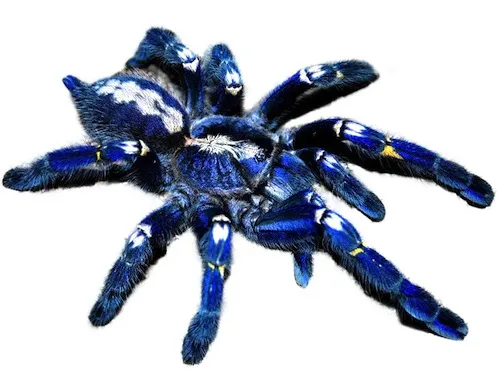
A secure and appropriate enclosure is critical for your Gooty Sapphire Tarantula’s well-being. A tall enclosure is preferable, as this species is arboreal. For a juvenile tarantula, a terrarium approximately 12x12x18 inches is sufficient. As it grows, a larger enclosure, such as an 18x18x24 inch or even larger, will be needed to accommodate its size. The enclosure must have a secure lid to prevent escapes. Ensure the enclosure is well-ventilated to prevent the buildup of excessive humidity and mold growth. Avoid using aquariums, as they typically do not provide adequate ventilation. Choose an enclosure made of glass or acrylic, and provide plenty of space to allow the tarantula to move and explore. Consider the tarantula’s growth rate when selecting an enclosure size; you’ll likely need to upgrade the enclosure as the spider matures.
Substrate and Decor
The substrate should be deep enough for the tarantula to burrow if it chooses, and it should also retain moisture to help maintain the necessary humidity levels. A mixture of coconut fiber, peat moss, and vermiculite is ideal. These materials promote good drainage while retaining humidity. Provide several inches of substrate at the bottom of the enclosure. Add decorations such as cork bark, branches, and artificial plants to create hiding places and climbing opportunities. Avoid sharp objects that could injure the tarantula. A water dish is essential, as is a hide made of cork bark or a similar material, which will provide a safe retreat. Ensure the decor is securely placed and doesn’t pose any hazard to the tarantula. Ensure the chosen substrate is free of pesticides and other harmful chemicals.
Temperature and Humidity
Maintaining proper temperature and humidity is crucial for the health of your Gooty Sapphire Tarantula. The ideal temperature range is between 75°F and 85°F (24°C to 29°C). Use a heat source like a low-wattage heat lamp or a heat mat placed on the side of the enclosure to maintain this temperature. Avoid placing the heat source directly under the enclosure, as this can overheat the substrate. The humidity level should be between 65% and 75%. Use a hygrometer to monitor the humidity levels. Mist the enclosure with dechlorinated water 2-3 times a week, or as needed, to maintain the proper humidity. Ensure the enclosure has adequate ventilation to prevent mold growth. Avoid drastic temperature or humidity fluctuations to prevent stress on your tarantula. Proper temperature and humidity are crucial for a successful molt.
Feeding Your Gooty Sapphire Tarantula
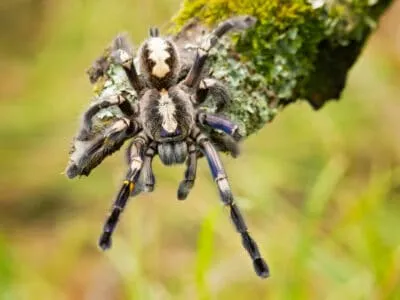
What to Feed
Gooty Sapphire Tarantulas are insectivores, and a varied diet is essential for their health. Crickets, roaches, mealworms, and other commercially available feeder insects make excellent food sources. The size of the feeder insects should be appropriate for the tarantula’s size. For juveniles, feed appropriately sized crickets or roaches. Adults can handle larger prey. Avoid feeding wild-caught insects, as they may carry parasites or pesticides. Always gut-load the feeder insects with nutritious foods, such as vegetables and commercial cricket food, before feeding them to your tarantula. This ensures your tarantula receives essential vitamins and minerals. Remove uneaten prey within 24 hours to prevent stress and possible injury to the tarantula. Ensure the prey insects are free of pesticides.
Feeding Schedule
The feeding schedule depends on the tarantula’s age and size. Juveniles should be fed 2-3 times per week. Adults can be fed once a week or every other week. Observe your tarantula’s behavior and appetite. If it’s not eating, it might be preparing to molt. Overfeeding can lead to obesity and health problems. Adjust the feeding schedule as needed based on your tarantula’s condition. Offer only what your tarantula can consume. If the tarantula is growing quickly, it may require more frequent feedings. Be cautious with overfeeding, and always remove any uneaten food to maintain cleanliness. Avoid disturbing the tarantula during molting; it will not eat during this period.
Watering and Hydration
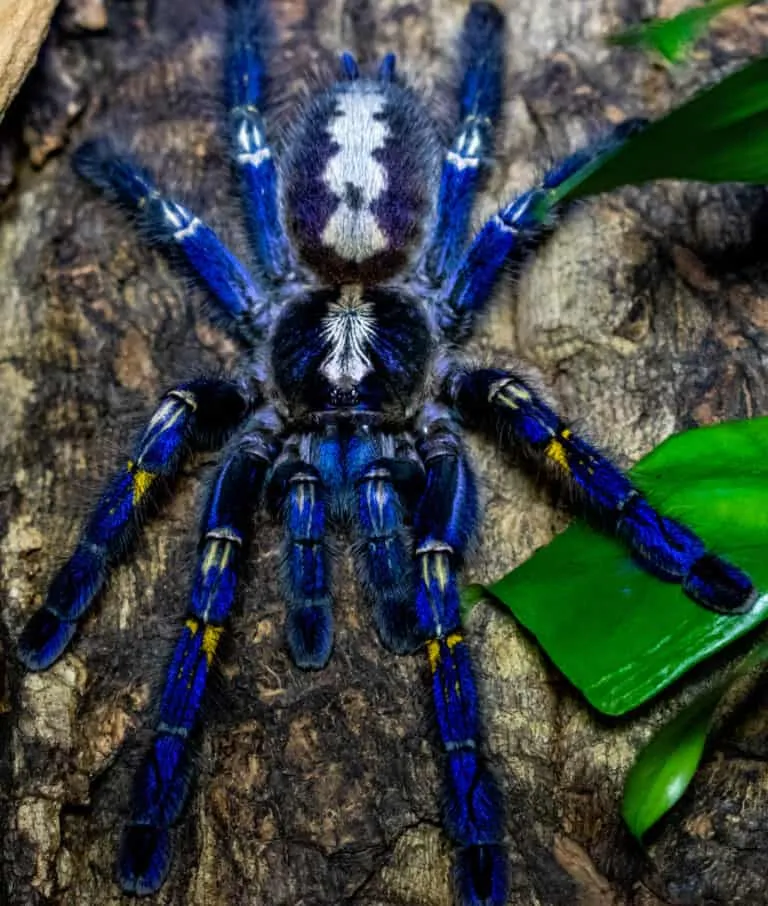
Providing fresh, clean water is crucial for your Gooty Sapphire Tarantula’s hydration. Use a shallow water dish that is easy to access but not too deep. Always use dechlorinated water to prevent harm to your tarantula. Fill the water dish regularly, and clean it weekly to prevent bacterial growth. In addition to the water dish, mist the enclosure lightly, especially during molting, to maintain humidity. Observe your tarantula’s behavior. If it appears dehydrated, increase the frequency of watering or misting. Monitor the water dish and replace any soiled water immediately. Fresh, clean water is essential for proper hydration and overall health.
Grooming and Maintenance
Cleaning the Enclosure
Regular cleaning is essential to maintain a healthy environment for your Gooty Sapphire Tarantula. Spot-clean the enclosure weekly by removing any uneaten food, dead insects, and molted skins. Replace the substrate partially every few months, or more frequently if it becomes soiled. Completely replace the substrate every six to twelve months. Avoid using harsh chemicals or cleaning agents inside the enclosure. Clean the water dish regularly. Always wear gloves when cleaning the enclosure, as the tarantula’s urticating hairs can cause irritation. Regular cleaning reduces the risk of mold, bacteria, and mites. A clean enclosure is a healthy enclosure for your tarantula. Disinfect the enclosure when necessary. Before returning the tarantula to its enclosure, let the enclosure completely dry.
Molting Process

Molting is a natural process for tarantulas, during which they shed their exoskeleton to grow. The molting frequency depends on the spider’s age and growth rate. Juveniles molt more frequently than adults. Before molting, the tarantula may become less active and stop eating. It may also start to build a web mat. During the molt, the tarantula will lie on its back. Do not disturb the tarantula during the molting process. It can be very vulnerable. After molting, the tarantula’s new exoskeleton will be soft and fragile. Do not feed the tarantula for a week or two after molting to allow the exoskeleton to harden. The molt provides insights into the tarantula’s health and age. Molting is a crucial part of the tarantula’s lifecycle, and patience during this time is critical.
Handling Your Tarantula
Safe Handling Practices
Handling Gooty Sapphire Tarantulas is generally not recommended, especially for beginners. They are fast and can be easily startled, leading to a bite or the release of urticating hairs. If you must handle your tarantula, do so with extreme caution. Gently coax the tarantula onto your hand or a soft surface. Always handle the tarantula close to the ground to minimize the risk of injury if it falls. Avoid sudden movements and loud noises. Wash your hands thoroughly before and after handling. Be aware of the urticating hairs, which can cause skin irritation. Handling can be stressful for the tarantula; it’s best to admire them from a distance. Handling should be avoided if it causes undue stress on the animal. Handle them in a secure and controlled environment.
Recognizing Stress Signals
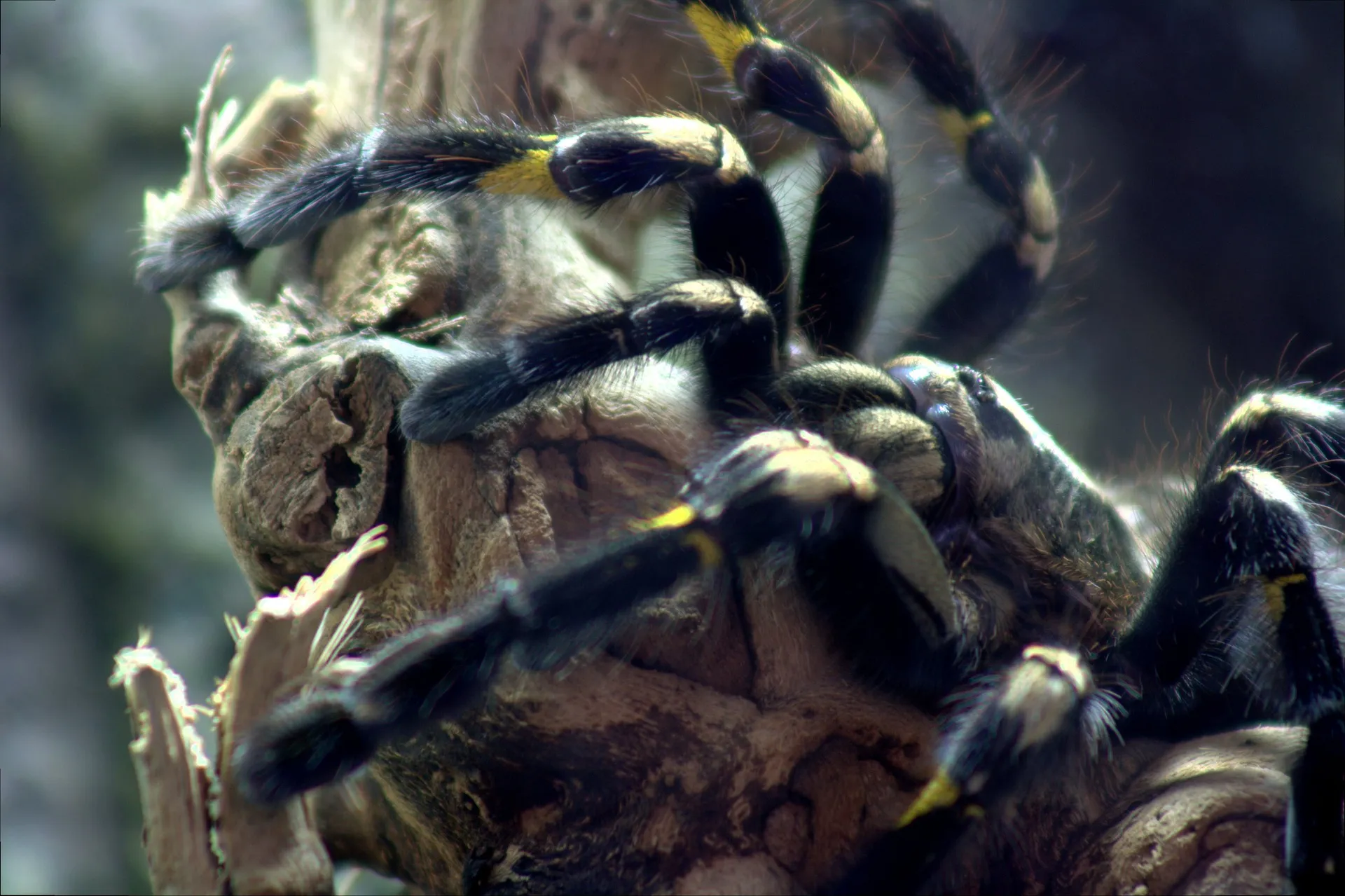
Learn to recognize the signs of stress in your Gooty Sapphire Tarantula. These signs can include a defensive posture, such as raising its front legs and fangs, flicking urticating hairs, and rapid movement. If your tarantula displays these behaviors, leave it alone and allow it to calm down. Avoid any actions that might scare or agitate the tarantula. A stressed tarantula is more likely to bite or flick hairs. Provide a secure and quiet environment to minimize stress. Understanding your tarantula’s behavior helps provide optimal care and minimize unnecessary stress. By understanding your tarantula, you can build a better relationship and ensure its well-being.
Common Health Issues and Solutions
Parasites and Diseases
While Gooty Sapphire Tarantulas are generally hardy, they can be susceptible to certain health issues. Mites can infest tarantulas, causing irritation and potentially transmitting diseases. Prevent mite infestations by maintaining a clean enclosure, using fresh substrate, and quarantining new arrivals. Fungal infections can occur if the enclosure is too humid or poorly ventilated. Maintain appropriate humidity levels and ensure proper airflow. Bacterial infections can arise from unsanitary conditions. Always remove uneaten food and clean the enclosure regularly. If your tarantula shows any signs of illness, such as lethargy, loss of appetite, or unusual behavior, consult a veterinarian experienced in exotic animals. Early detection and treatment are key to preventing serious health problems. Isolate the tarantula if it displays signs of disease.
Preventative Care
Proactive care is essential for maintaining your Gooty Sapphire Tarantula’s health. Provide a balanced diet with appropriately sized feeder insects. Maintain proper temperature and humidity levels. Ensure the enclosure is clean and well-ventilated. Quarantine new arrivals to prevent the spread of parasites or diseases. Regularly inspect your tarantula for any signs of illness or injury. Offer fresh, clean water at all times. Avoid using harsh chemicals or cleaning agents in the enclosure. Handle the tarantula as little as possible to minimize stress. Always research and understand the species’ requirements before acquiring a Gooty Sapphire Tarantula, and providing proper care can contribute to the tarantula’s health and longevity. A well-cared-for tarantula can thrive for many years.
Breeding Gooty Sapphire Tarantulas
Sexing Tarantulas
Sexing Gooty Sapphire Tarantulas can be done by examining the underside of the abdomen after a molt, for the presence of spermathecae (in females) or the presence of tibial hooks (in males). Mature males possess tibial hooks on their front legs, which they use during mating. Females will have a spermathecae (a sac for storing sperm) which can be seen during a molt. The best way to determine the sex of the tarantula is during molting, where the exoskeleton is available for examination. Use a magnifying glass to carefully examine the molt for the presence of these features. Juvenile tarantulas are difficult to sex. Experienced keepers are better equipped to identify the sex of a tarantula.
Mating and Egg Sacs
Breeding Gooty Sapphire Tarantulas is a challenging undertaking, recommended for experienced keepers only. The process starts by introducing a mature male into the female’s enclosure. The male will approach the female and tap his legs on her carapace. If the female is receptive, she will allow the mating to proceed. After mating, the female may become aggressive toward the male, and it’s crucial to separate them quickly to prevent the male from being cannibalized. The female will then create an egg sac containing several hundred eggs. The egg sac should be removed and incubated to hatch the eggs. Breeding this species requires careful planning, proper equipment, and a thorough understanding of their needs. Successful breeding can result in a large number of offspring, requiring significant resources. This is not an endeavor for beginner hobbyists.
Conclusion
Caring for a Gooty Sapphire Tarantula is a rewarding experience for dedicated enthusiasts. By providing the correct habitat, proper nutrition, and consistent maintenance, you can ensure your tarantula thrives. Remember to research and understand the species thoroughly before acquiring one. Regularly monitor your tarantula’s health and behavior, and address any concerns promptly. With patience, care, and attention, you can enjoy the beauty and unique characteristics of this stunning arachnid for years to come. Remember that the Gooty Sapphire Tarantula is an exotic animal that requires respect. By following this care sheet, you can become a responsible tarantula owner, and experience the joy of caring for this spectacular species. Enjoy your journey in the world of tarantulas!
